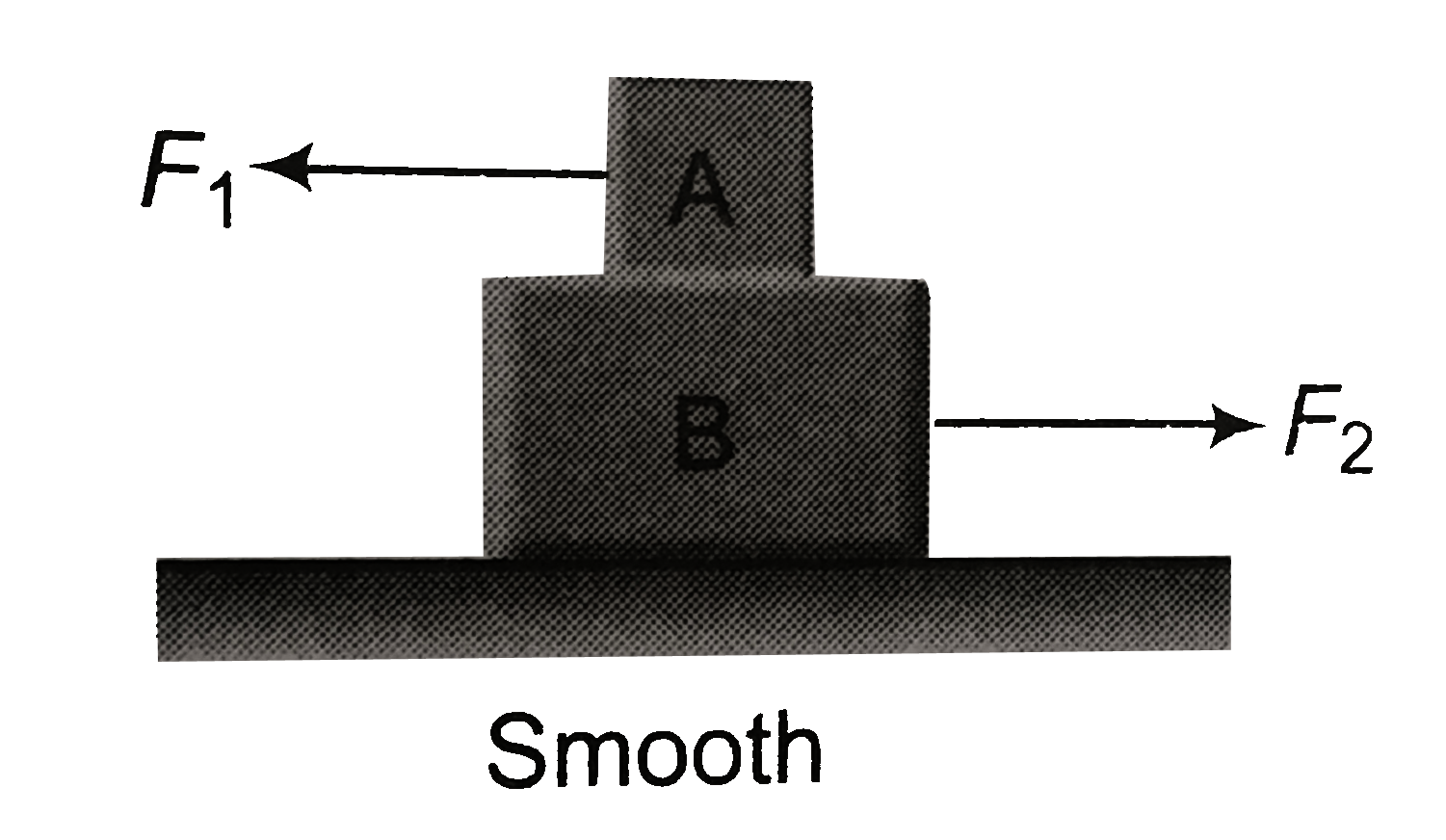A : Work done by friction can increase the kinetic energy of the body.
R : Friction is a type of contact force and it always opposes the relative motion or tendency of relative motion.
If both Assertion & Reason are true and the reason is the correct explanation of the assertion
If both Assertion & Reason are true but the reason is not the correct explanation of the assertion
If Assertion is true statement but Reason is false
If both Assertion and Reason are false statements
To analyze the given statements regarding work done by friction and its relationship with kinetic energy, we will break down the assertion and the reason step by step.
Step 1: Understand the Assertion
The assertion states: "Work done by friction can increase the kinetic energy of the body."
- Generally, friction is known to oppose motion, which typically results in a decrease in kinetic energy. However, in certain scenarios, such as when a force is applied to a body on a rough surface, friction can indeed do positive work on another body, thereby increasing its kinetic energy.
Step 2: Understand the Reason
The reason states: "Friction is a type of contact force and it always opposes the relative motion or tendency of relative motion."
- This statement is true. Friction acts to resist the motion between two surfaces in contact. It is a contact force that arises due to the interactions at the microscopic level between the surfaces.
Step 3: Analyze the Relationship
Now, we need to analyze the relationship between the assertion and the reason.
- While the reason correctly describes the nature of friction, it does not directly explain how the work done by friction can lead to an increase in kinetic energy. The assertion is correct in specific contexts, but the reason does not provide a sufficient explanation for it.
Step 4: Conclusion
Based on the analysis:
- Both the assertion and the reason are correct statements.
- However, the reason does not adequately explain the assertion. Therefore, the correct conclusion is that the assertion is true, but the reason does not support it.
Final Answer
The answer to the question is that both statements are correct, but the reason does not explain the assertion. Thus, the appropriate option would be option 2.
---
The assertion states: "Work done by friction can increase the kinetic energy of the body."
The reason states: "Friction is a type of contact force and it always opposes the relative motion or tendency of relative motion."
Now, we need to analyze the relationship between the assertion and the reason.
Based on the analysis:
- Both the assertion and the reason are correct statements.
- However, the reason does not adequately explain the assertion. Therefore, the correct conclusion is that the assertion is true, but the reason does not support it.
The answer to the question is that both statements are correct, but the reason does not explain the assertion. Thus, the appropriate option would be option 2.
Topper's Solved these Questions
- LAWS OF MOTIONBOOK - AAKASH INSTITUTECHAPTER - LAWS OF MOTIONEXERCISE - Assignment (SECTION-C)
63 Videos
- KINETIC THEORYBOOK - AAKASH INSTITUTECHAPTER - KINETIC THEORYEXERCISE - EXERCISE (ASSIGNMENT) SECTION - D Assertion - Reason Type Questions
10 Videos
- MAGNETISM AND MATTER BOOK - AAKASH INSTITUTECHAPTER - MAGNETISM AND MATTER EXERCISE - ASSIGNMENT (SECTION D)
26 Videos
Similar Questions
Knowledge Check
A : Work done by the frictional force can’t be positive.
R : Frictional force is a conservative force.AIf both Assertion & Reason are true and the reason is the correct explanation of the assertion, then mark (1).BIf both Assertion & Reason are true but the reason is not the correct explanation of the assertion, then mark (2).CIf Assertion is true statement but Reason is false, then mark (3).DIf both Assertion and Reason are falsė statements, then mark (4).The work done by kinetic friction on a body :
Ais always negativeBis always zeroCmay be +ve,−ve or zeroDis always positive(A) : Force of friction applied by ground on the wheels of a bicycle is always in the direction of motion of the bicycle .
(R) : Force of friction always opposes the relative motion between the surfaces in contact .AIf both A and R are true and R is the correct explanation of A .BIf both A and R are true but R is not correct explanation of A .CIf A is true but R is false .DIf A is false but R is true
Frictional force always opposes motion of a body.
View SolutionAssertion : Use is made of eddy currents in induction brakes.
Reason : As eddy currents always oppose the relative motion.
View SolutionIn the figure shown, force of friction on A from B will always be right wards
Friction always opposes the relative motion between two bodies in contact.

View SolutionAssertion :− When a man climbs the rope friction force acts in downward direction.
Reason :− Friction force opposes relative motion ot tendency of relative motion between two contact surfaces.
View SolutionAssertion: Frictional force is the component of contact force parallel to the surface.
Reason: Friction force always opposes the motion of a body.
View Solution
